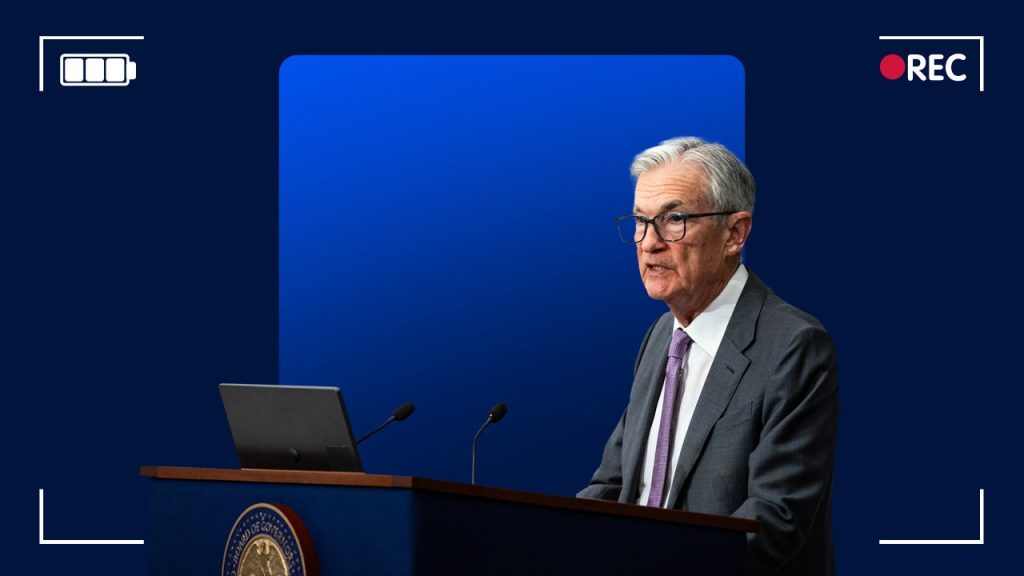One person is going to be very unhappy if the U.S. central bank doesn’t cut borrowing costs today: President Donald Trump. Here’s a timeline of Trump’s comments on monetary policy over the past few weeks:
June 4, 2025: After a closely watched payrolls report showed that the private sector created a dismal 37,000 jobs in June, Trump posted on Truth Social that “‘Too Late’ Powell must now LOWER THE RATE. He is unbelievable!!! Europe has lowered NINE TIMES!”
June 6, 2025: Two days later, the Department of Labor’s monthly jobs report painted a better picture about the labor market, its own measure showing that private employers created almost four times as many jobs in May (140,000). Trump, however, asked for the Fed to “go for a full point, Rocket fuel!” on his social media account. He also later posted that day: “If ‘Too Late’ at the Fed would CUT, we would greatly reduce interest rates, long and short, on debt that is coming due. … There is virtually no inflation (anymore), but if it should come back, RAISE “RATE” TO COUNTER. Very Simple!!! He is costing our Country a fortune. Borrowing costs should be MUCH LOWER!!!”
June 11: After a report from the Bureau of Labor Statistics showed that inflation rose less than expected in May, Trump posted, “GREAT NUMBERS! FED SHOULD LOWER ONE FULL POINT. WOULD PAY MUCH LESS INTEREST ON DEBT COMING DUE. SO IMPORTANT!!!”
June 12: Trump referred to the Fed chair as a “numbskull” for not cutting interest rates. He later claimed at a White House press conference that the Fed should cut rates 2 full percentage points. He said he was not going to fire Powell, but he also doesn’t “know why it would be so bad.”
So, is there any legitimacy? Yes and no. Cracks are beginning to form in the U.S. economy. Hiring is slower than before the pandemic and workers are remaining unemployed for longer.
“Normally, the Fed would say, ‘There could be a downturn. We don’t have that much space. Maybe we cut first to stop that from happening,’” Derek Tang, an economist and CEO at LHMeyer, a monetary policy research team founded by former Fed Governor Larry Meyer, tells me.
Yet, massive full percentage-point cuts are typically reserved for economic crises, a look back at the Fed’s historic interest rate moves shows. The last time the Fed cut borrowing costs by 100 basis points was in March 2020, when financial markets and economic activity was cratering at the onset of the coronavirus pandemic.
While the U.S. economy has certainly slowed, joblessness is still at historic lows and the stock market is near record highs — meaning the financial system is a far-cry away from a crisis.
“Without the tariff uncertainty, this is the soft landing the Fed has been working toward for the past three years,” says Bankrate Chief Financial Analyst Greg McBride, CFA.
That also means the Fed might’ve been willing to cut interest rates this month if tariffs weren’t in the picture, economists say.
“They’ve met their goals, there’s no real reason to have a federal funds rate at 4.25-4.5 percent,” says Luke Tilley, chief economist at Wilmington Trust and a former adviser to the Philadelphia Fed. “Unless you think that’s neutral or that these tariffs might cause inflation.”
All of that encapsulates the tricky position Powell and Co. find themselves in right now: Central bankers say they make decisions independent from politics, but it’s White House policies that are keeping the Fed’s rate cuts on hold.
“It’s going to be very difficult for the chair to navigate this without appearing critical of the White House,” Vincent Reinhart, an economist at BNY Investments who spent more than two decades at the Fed, told me back in May. “The outlook for the economy is the outlook for the political economy, and your economic forecast depends on actions by political authorities.”
Read the full article here












